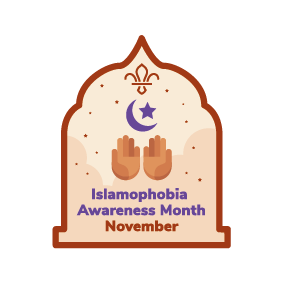
Help a local foodbank
You’ll need
- A4 paper
- Pens or pencils
Before you begin
- Use the safety checklist to help you plan and risk assess your activity. There's also more guidance to help you carry out your risk assessment, including examples.
- Make sure all young people and adults involved in the activity know how to take part safely.
- Make sure you’ll have enough adult helpers. You may need some parents and carers to help.
Planning and setting up this activity
- The Trussell Trust is a great place to start looking for a food bank near you. You can find details of independent food banks online.
- Be aware of your group’s needs and safeguarding requirements. You should be especially sensitive if you know the topic of food banks is difficult for anyone, as some people in your group may use them or know people who do. Always let people know about running this activity in advance and give people the chance to let you know if they’re not comfortable taking part. You may need to make other adjustments, such as making sure everyone knows they can leave the activity at any point or having alternative activities available. Speak to them and their parent or carer beforehand, so that you can create a plan for how to make it a manageable and comfortable session for them.
- Make sure you look out for individuals and provide a safe and calm space for them to process their emotions. You may need to offer reassurance for anyone who is nervous, upset or unsure. Always follow the Yellow Card.
- Once you’ve found a food bank that’s happy to have you visit, and you’ve agreed on a date and time, think about what else you may need to know. For example, such is accessibility needs, toilets or if you can help during your visit.
- You may wish to fundraise for or gather donations the food bank needs for your visit and take them with you.
Running this activity
- Gather everyone together and ask if anyone knows what a food bank is. Explain that food-banks provide food for free, for those who are struggling to afford the food you need. They are community organisations and you’ll usually need to get a referral to a food bank before you can use it. You might be able to use some food banks without a referral - for example, if it’s run by a local faith group. They also give out essential items too, such as toilet roll and soap. A lot of the items are donated, but the organisers and charities also buy food to provide.
- Ask everyone to think of any questions you may want to ask at the foodbank. You could use the ‘Food bank facts’ to plan some questions to ask.
- On the day of your visit, gather everyone together in a safe place and give a safety briefing. You could introduce the volunteers you’re meeting or tell everyone what you’re going to do. For example, you may be able to help make food parcels or sort donations.
- Alternatively, you may want someone from the food bank to visit you and to tell the group about what they do.
- During the visit, everyone should take the opportunity to learn about the food bank, find out what volunteers do, help in any way they can, and ask any questions. People may want to ask about challenges and how they could help. Food banks are busy and important places, so everyone should thank the people who took the time to show them around and answer their questions.
- After your visit, ask everyone to reflect on the visit, such as what they learned, what challenges they may have identified and what you could all do to help. Ask people to come up with some ideas of how you could make a difference, depending on what the food bank needed help with. For example, they could collect or sort donations, run a fundraising event, volunteer to sort donations or make a collection point at the meeting place.
All sorts of people use food banks for lots of different reasons.
- People may suddenly need to use a food bank because of an unexpected event, for example, a house fire, losing their job, an illness, or a natural disaster like a flood.
- In 2019, the Trussell Trust found that one in seven people at their food banks are in employment (or live with someone who is).
- Many people at Trussell Trust food banks are single parents or have a health issue – this doesn’t just put pressure on their budgets, but it makes it harder for them to access (and stay in) the workplace too.
- The majority of people at Trussell Trust food banks are referred after experiencing an issue with the benefits system.
- Why do people use the food bank you’re visiting?
Food banks promote their services differently.
- They may use the internet, social media, posters, or newspaper adverts.
- People may be referred by social workers, doctors, or the Citizens’ Advice Bureau.
- How does the food bank you’re visiting promote their services?
Some food banks are independent, some belong to wider initiatives.
- For example, some are part of the Trussell Trust’s network.
- Is the food bank you’re visiting part of a bigger organisation?
Food banks get food from lots of different places.
- As well as donations, some food banks are linked to supermarkets or catering suppliers that donate food that would otherwise be wasted.
- Where does the food bank you’re visiting get its food from?
Different food banks have different rules.
- Some might not accept donations of fresh food or alcohol, for example.
- Some food banks provide essential non-food items such as toiletries and menstrual products.
- Some independent food banks may accept self-referrals, but in general, most food banks only accept referrals from professionals such as doctors, social workers, health visitors, and school staff.
- What can’t people donate to the food bank you’re visiting? Do they provide non-food items?
- How do people get to use the food bank? Can they self-refer?
Food banks offer a variety of services too.
- Some food banks deliver food.
- Some run holiday clubs, budgeting courses, or other projects to address the causes of poverty in their community. Others signpost to other organisations that offer services.
- Does the food bank you’re visiting offer any other services?
Food banks face a variety of challenges.
- If lots of people are affected by something at once (for example, a flood), food banks can come under strain as lots more people than usual need their help.
- Food banks often see an inconsistent amount of donations throughout the year, for example, they might get loads at Christmas then not as many in the new year. This can mean they’re short of essentials at different times.
- What challenges does the food bank you’re visiting face at different times of year? What are they struggling with right now?
- How could you be most helpful to your local food bank at the moment?
Reflection
This activity was all about helping the community. How do food banks support their local community? People might think about their role in providing essentials to anyone who needs them, as well as any other work they do and how they help prevent food waste. How do others in the community support food banks? For example, do supermarkets donate food? What support do food banks need to continue to make the world a better place?
This activity was all about caring. Was anyone surprised at any of the reasons that people might use food banks? How do people think it feels to use a food bank? They might think about it being a relief to have access to essentials, or feeling grateful. What could people do to help food bank users? They might think about donating if they can, joining campaigns by organisations like the Trussell Trust, or just spreading the word.
Safety
All activities must be safely managed. You must complete a thorough risk assessment and take appropriate steps to reduce risk. Use the safety checklist to help you plan and risk assess your activity. Always get approval for the activity, and have suitable supervision and an InTouch process.
Adjust your action so it meets the food bank’s needs and is achievable for your group. The size of the group, and the time and resources you have, will affect what sort of help you’re able to give.
- Remember that some young people may have experience of using food banks. Frame the experience positively by focusing on the help food banks provide – make sure that every discussion speaks about food bank users respectfully and avoid ‘othering’ food bank users (talking about them as a group who are totally different to the people in the discussion).
- When you chat to the food bank, make sure you find out how to make your visit accessible for everyone in your group. You may want to think about getting to the food bank, the accessibility of buildings, and accessible toilets, as well as anything that might be challenging for people with sensory differences. Work with the food bank, young people, and their parents or carers to figure out how to make the visit work.
All Scout activities should be inclusive and accessible.
Many people who use food banks are affected by homelessness. We’ve partnered with Crisis and Simon Community NI to develop activities that help young people understand the factors that contribute to homelessness, and how they can help end the problem for good. Why not work towards your Community Impact Staged Activity Badge by trying some?
Anyone who enjoyed this visit may want to work towards another badge that focuses on making a difference, whether it’s local, national, or international. The Scouts Global Issues Activity Badge, or Scouts Local Knowledge Activity Badge could be the perfect place to start.
If people have lots of different good ideas for ways to make a difference, they could split into task teams led by young people.


